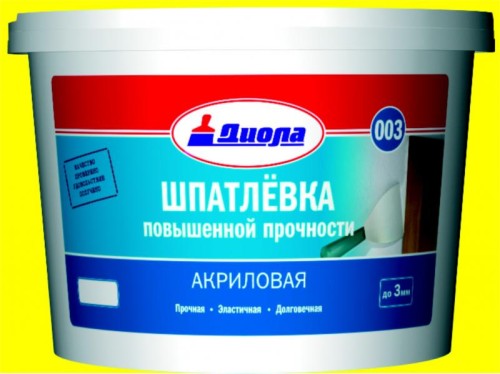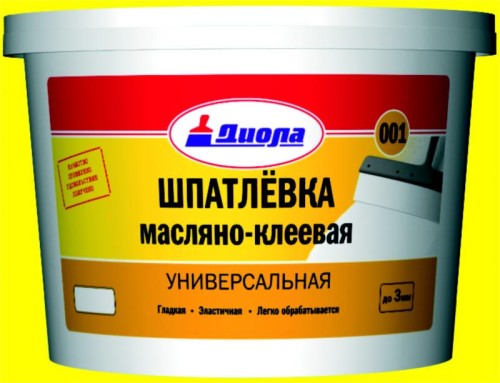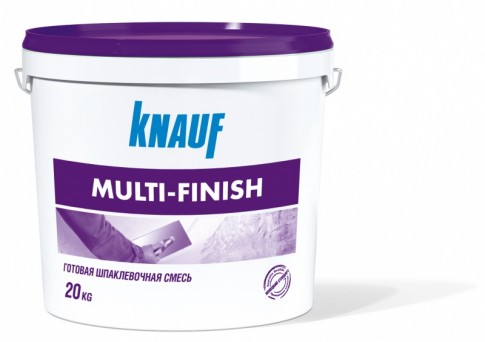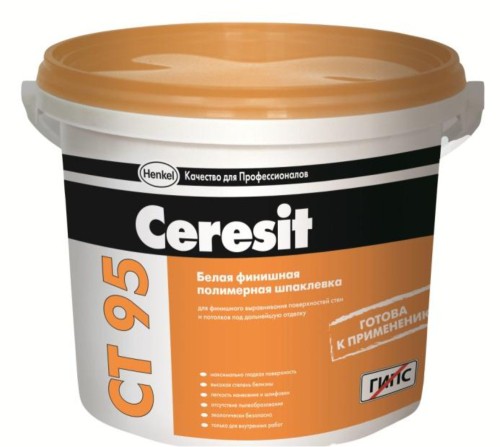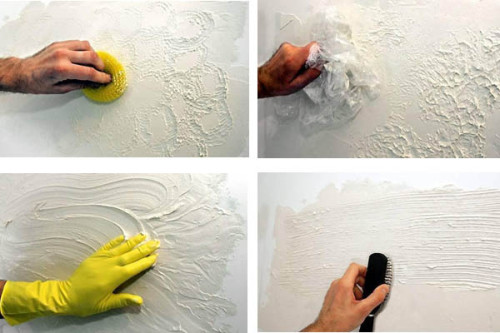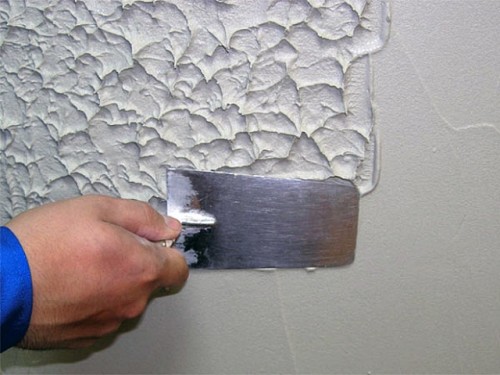
Best Wall Spike: Features of Choice Building materials

To date, there is a large selection of putty and each of them has its own unique properties. Therefore, it is impossible to definitely say which putty is better for the walls. In order to correctly choose the material, first of all you need to focus on what the walls are made. In addition, the features of the use of certain products should be taken into account.
The putty is widely used not only for interior decoration, but also for facade. The mixture for the first case is called interior, and for the second - facade. For the latter, two parameters are important - climate, in which the building is located, as well as the type of materials used for surface treatment. Internal work mixes also differ in terms of use. This should also take into account the level of humidity in the room where work will be carried out. To properly make a choice in favor of a mixture, you need to know the features of putty, which are on sale. Next, consider the characteristics of some of them.
Content
Varieties of putty mixtures
Acrylic Wall Spike
Acrylic-based mixtures are considered one of the highest quality. If they are correct to treat the surface, it will be a guarantee that it will last long enough. Such putty are well protected by the wall of moisture. Therefore, they are used in premises with high levels of humidity. If you compare a mixture based on acrylic with many other building materials for finishing, having a certain period of storage, then it is worth saying that it is able to maintain its properties for a long time.
Water dispersion mixes
This type of spacion mixture is recognized as environmentally friendly products. Its foundations are polymers that give the material elasticity, improved coupling and long service life. It is important that the packaging in which such a putty is stored is hermetically closed.
Oil-glue mixtures
These putty for walls under painting contain an oil foundation in their composition. This is not the best material. After all, he has a number of shortcomings. First of all, it is worth saying that such mixes are compatible with all materials. For painting the wall after oil putty, it is necessary to use paint only on the basis of olifa. In addition, it is believed that these mixtures can harm health. Therefore, it is better not to use them at home. Finally, these putty are simply short-lived. Of the advantages, only low cost can be noted.
Putty on cement and gypsum database
These putty are known for their coating strength. But, some components make it difficult to work with similar mixtures. They need to be able to prepare according to a special technique. The required consistency is achieved by the gradual addition of water and thorough mixing. For this you need experience. In addition, breeding putty is required in the amount required for once. The fact is that after some time the compositions quickly harde. If you try to dilute after that with their water, they will lose their unique properties. Therefore, it makes no sense to breed a lot of mixtures. The remaining mass will still be thrown out. Such putty are best suited for premises with high levels of humidity. In addition, they can be separated by the surfaces on which mechanical impacts are.
As for prices for similar blends, they depend on a particular manufacturer, composition, appointment and packaging. Therefore, when choosing, consider a valid range in which you can use the composition. In addition, pay attention to what kind of putty is: start-up (for the first layer) or the finish (for the final layer). It is also worth considering for what type of work (outer or internal) is intended for one or another. Putchals for external work often have toxic components. Therefore, they cannot be used to decorate walls indoors. Be sure to pay attention to the date of manufacture, whether there are some additives as well as the technology of cooking mixtures. Perhaps you do not have enough experience to prepare one or another putty good quality. Without it, you can spoil even the most good composition.
Start and Finish Blend
There are starting and finishing spacure mixture. The first option is usually used if it is necessary to correct large irregularities. When used for these purposes a different type of material (finishing putty), it can be covered with cracks over time. Starting spike is usually applied using a wide spatula. If you need to align large areas, it is advisable to purchase a rule to 2 m. The starting putty quickly frosts, but it is not necessary to process abrasive materials. Therefore, when working with it you need to be very neat, so as not to do what it does not fix.
As for the finish mixture, how it should be understood from the name, it is used as the final layer. So that the walls become smooth, after this putty surface is treated with an abrasive grid. To apply such a mixture on the wall, as a rule, a small spatula is used. Large tools with this type of work it makes no sense. After processing, only eliminate the smallest irregularities will remain.
When you already know the difference between the existing construction mixtures, you yourself will understand which putty is better to choose. In any case, focus on the form of a mixture and its manufacturer.
Dry and liquid spacities for walls
Today, putty manufacturers are produced in the form of paste and dry powder. Moreover, the first option is ready for use. Dry putty mixes are good because they are easily transported and can be successfully stored in warehouses at low temperatures. For the preparation of a dry putty for walls, a certain amount of powder falls asleep into a container with water and is stirred until a homogeneous mass is obtained. In order to be a clean mixture without lumps, a shock is used to the drill, which includes small revs.
In the layer of putty from such a kneading, emptiness are formed, called "sinks". Therefore, after stirring, the mass cannot be immediately used. It is necessary to give her at least 5 minutes to stand up so that during this time the binding element is dissolved, and the available modifiers worked. In addition, during this time, air bubbles evaporate from the mixture. After that, the mass for 6-7 minutes is again stirred.
As for pasty putty, they are used by the masters who want to get a thinner layer during finishing works. In addition, much less dust is formed with such material. To obtain such a putty for the walls of decorative, manufacturers use a very small filler, the size of the fractions of which ranges from 0.002 to 0.1 mm. All this is mixed with special machines. Through a simple mixer, this composition is practically impossible to make such a composition, without any dry substances remain in the mixture.
Finished putty, as a rule, are made on the basis of vinyl or water-acrylic mixtures. Sometimes organic solvents are used for their production. If you compare ready-made putty mixtures with dry, then it is worth noting their fear of temperature differences, especially frosts. Thus, everyone itself decides, which putty is better to put the walls.
Construction mixture selection tips
Among other things, it is distinguished by putty with sand and without sand. The variant of the mixture without sand can be safely used for any type of work. It is suitable for premises with an increased humidity. The composition is easily applied. As a result, the surface will be perfectly smooth. Such mixtures are usually white due to the fact that their composition contains white cement.
As for putty with sand, it is best to use it for external work. After all, because of cement, it has a dirty gray color. In addition, such a composition can be used when aligning walls with strong defects and deformations. Therefore, in order to correctly choose a shtailex mixture, first decide with the task set before you, the place of facing works, after which you can go to the store for a suitable material.
By type of binder ingredient, three types of putty can be distinguished:
- gypsum
- polymer
- cement.
To choose one of them, you need to consider the features of the room in which work will be carried out, as well as the financial capabilities of the host. Cement putty is well suited for apartments with high humidity. After applying on the wall, it gives a small shrinkage, because of which it is imposed in several layers.
Polymer putty is considered the most expensive. It has very good qualities. As for gypsum putty, it is not suitable for use in rooms with elevated levels of humidity and for facade works. This material will hardly carry moisture and temperature differences. At the same time, it is suitable for removing large recesses and cracks.
Today, the building materials market is growing very rapidly. Therefore, there are putty, which were not before. For example, the latest compositions are developed with the base from PVA, which are well leveling and do not give to develop mold. In this case, such a putty is easily polished. On sale you can find and oil putty, which is characterized by resistance to moisture, durability, but with these qualities it dries quite a long time.
For external work, an acrylic facade spacure is optimally suitable, which is not scary of temperature differences and drop-down precipitations. When choosing a finish material, it is important to consider such an important criterion as its purpose. So there is a putty for aligning the walls of the first and second layer. In stock Also universal and specialized putty. To perform the main alignment of the wall, the most suitable is the mixture with high adhesion. At the same time, it should have high strength and durability. Such mixtures are putting the first layer. When you think to buy a putty for the walls, you should pay attention to the composition, characteristics and method of operation. Typically, the putty of the first layer is not peculiar to shrinkage. Some types of materials eliminate even the need to use the reinforcing grid.
As for the putty of the second layer, it is applied to the finish coating. Therefore, she is chosen in his mind. The best variant of such a mixture has a filler fraction of about 100 microns. The working surface with this material will turn out to be smooth and smooth, and this is very important for carrying out work on the final finishing of the walls, for example, when processing their paint. If you want to glue the wallpaper, and not to paint, then there is no need to use the putty of the second layer. There will only be enough first layer, which is considered to be aligning.
For certain tasks, specialized putty are used. Usually, the packaging of such a mixture is indicated for what particular purpose it is intended. For example, there is a mixture for urgent repairs, for sealing seams of plaster panels. Sometimes without such solutions it is very difficult to do. But the universal mixture appeared relatively recently. It may seem that such a type of putty can be very convenient, because it can replace the material for the first and second layer and even specialized mixtures. In fact, universal putty do not cope as it should be with one of the possible functions. It's just a competent advertising move, thanks to which they became so popular. And this is definitely not the best putty for the walls.
How to choose a putty color
Immediately it is worth saying that the color of the putty does not play a big role if the surface is planned to be caught with dense wallpaper or paint. High-quality material for painting is able to simply hide under him even the most contrast tone of the spike mix. The same can be said about dense wallpaper and ornaments. Neither the color of putty, nor small surface defects will not be noticeable.
If your choice fell on thin wallpaper of a light shade, it is recommended to choose expensive colored putty, the basis of which is cement. These compositions will save you to save money. White putty with the content of polymer glue is allowed to be applied on the operating surfaces by splashing. The layer, which is obtained by a similar way, can not even be painted. Such a surface for a long time will not become yellow.




